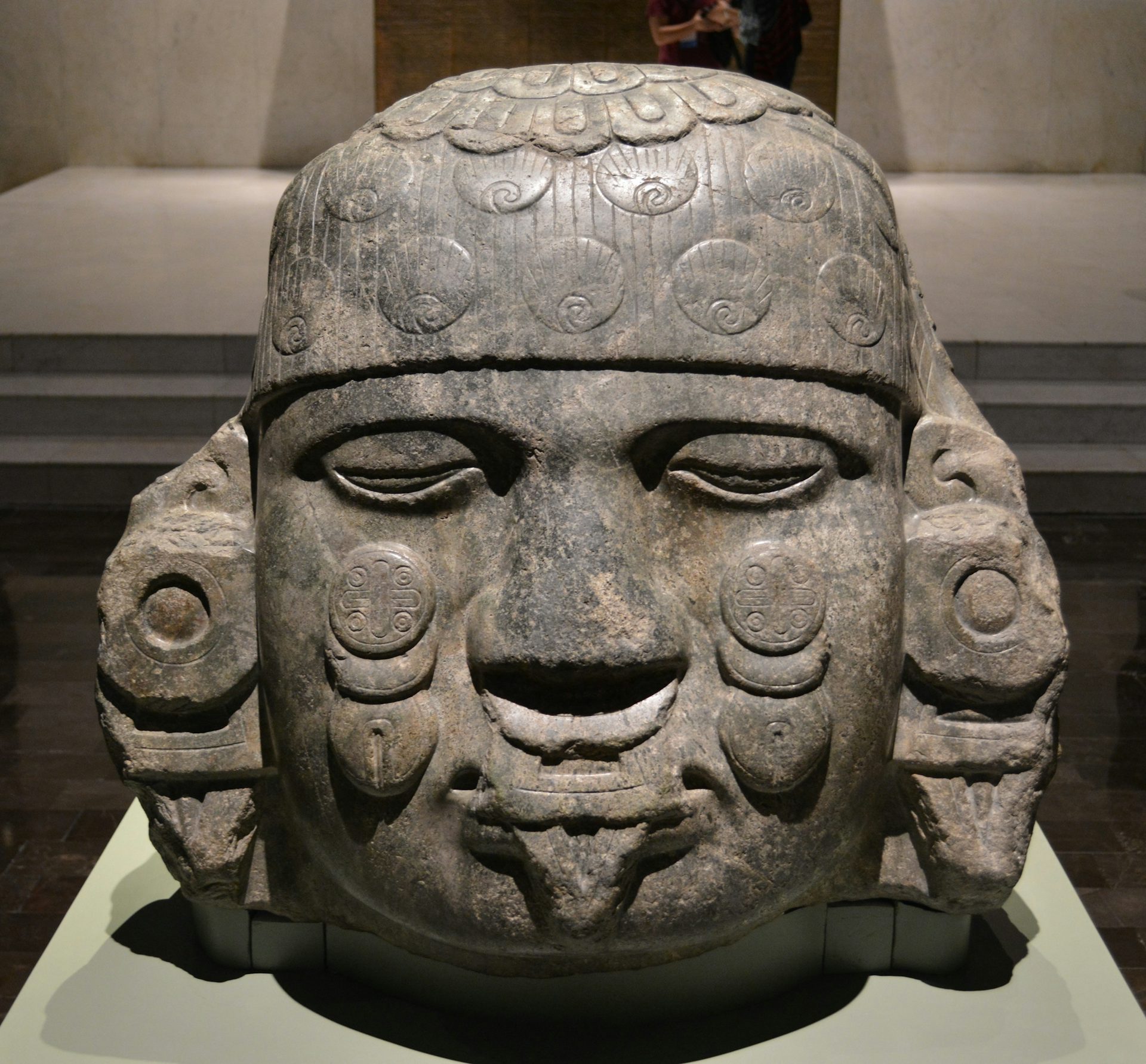Coatlicue

Overview
Coatlicue was a goddess that played a number of roles in the Aztec pantheon. Famous for wearing a skirt of snakes, she was the mother of Huitzilopochtli, the Aztec god of war, and served as an agricultural fertility deity. She also prophesied the downfall of the Aztec Empire.
Etymology
In Nahuatl, Cōātlīcue’s name literally means “Snakes-Her-Skirt.” While many scholars have translated the name less literally as “She who has a skirt of snakes,” some historians have suggested that the skirt itself was the subject of the name, rather than the woman wearing the skirt.
As was common practice amongst the Aztec pantheon, Coatlicue went by multiple names with each representing a different aspect of her divinity. One such aspect was Toci (“Our Grandmother,”) a figure associated with healing and war.[1] Another was Cihuacoatl (“Snake Woman”), a fertility goddess connected to sweat baths, midwives, and women who died in childbirth.[2]
Attributes
Coatlicue was traditionally portrayed wearing a skirt of writhing snakes. In fact, one of the most famous Aztec sculptures depicted her wearing a skirt made of rattlesnakes.

Standing nearly 9 feet tall, this Coatlicue statue is one of the Aztec Empire's largest surviving sculptures. As was typical of Aztec sculptures, all sides (including the bottom of the base) of the statue were decorated. The statue currently resides at the National Anthropology Museum in Mexico City, Mexico.
Dennis JarvisCC BY-SA 2.0Aside from her skirt, Coatlicue also wore a necklace of alternating hands and human hearts. She was commonly portrayed with a face of serpents in place of a human head, and her hands were likewise replaced with snakes. This use of Aztec iconography suggested that Coatlicue had been dismembered, with the twin head snakes possibly representing gouts of blood.[3]
Family
While Coatlicue had many children, the two most illustrious were Huitzilopochtli, the Aztec god of war, and his sister Coyolxauhqui, who famously tried to murder Coatlicue. Her other 400 children, the Centzonhuitznahua, were the gods of the southern stars.
Family Tree
Children
Daughter
Sons
- Coyolxauhqui
- Huitzilopochtli
- Centzonhuitznahua
Mythology
Coatlicue’s mythology was interwoven with that of her son. Huitzilopochtli was central to Coatlicue’s story, from her virginal pregnancy to the ensuing battle between her children. In the end, Coatlicue was simply a lonely mother who longed to see her child again. In a strange twist of fate, only the fall of the Aztec Empire would be able to reunite them.
The Virgin Birth of Huitzilopochtli
A story related in the Codex Ramirez told of the Mexica’s exodus from their ancestral home of Aztlan. During this journey, the Mexica (who would one day become the founders of the Aztec Empire) built temples to their patron god Huitzilopochtli. On a stopover near a place called Coatepec,
Quatlique [the goddess Coatlicue] who was a virgin, took a small quantity of white feathers and placed them in her bosom, from which she conceived without having known man, and there was born of her Vchilogos [an alternative name for Huitzilopochtli].[4]
When Coatlicue’s daughter Coyolxauhqui found out about her mother’s unusual pregnancy, she flew into a rage. Coyoloxauhqui gathered her 400 brothers, the Centzonhuitznahua, and launched an attack on her mother.
There are varying interpretations on what happened next. Coyolxauhqui and her brothers either killed Coatlicue, or were just about to when Huitzilopochtli emerged from the womb “in full war regalia.”[5] In the latter interpretation, the armed and armored Huitzilopochtli defeated his rival siblings and saved his mother.

The head of Coyolxauhqui. It is no accident that this statue is missing its body; images of Coyolxauhqui often depict her as nothing more than a decapitated head with closed eyes. Such representations are a result of her violent battle with Huitzilopochtli.
Carlos yoCC BY-SA 4.0An important element of symbolism hidden within this myth was that deceased warriors were said to become hummingbirds. The implication of Coatlicue becoming pregnant by a ball of feathers (described in some sources as hummingbird feathers) was that she had been impregnated by an anonymous soldier.
Predicting the Fall of the Aztec Empire
Not all of the Aztec’s myths were ancient tales—the Aztec religion was dynamic and alive right up until the time the Spanish arrived. During the rule of Moctezuma I (circa 1440–1469CE), sixty gift-bearing magicians were sent to visit Coatlicue in Aztlan.
When the magicians arrived in Aztlan, Coatlicue’s tutor agreed to lead them to her. The magicians were unable to reach her, however, as they were burdened with heavy gifts and she was atop a steep and sandy hill. Coatlicue’s tutor took the gifts from the magicians and ran them up the hill “as though carrying no more than a few straws.”[6]
When the magicians finally reached the hill’s summit, they found Coatlicue weeping for her long departed son Huitzilopochtli. She admonished the magicians for the inability to bring the gifts up the hill to her, warning them that “they had grown too heavy from all their rich foods and beautiful clothing.” She prophesied that the cities conquered by Huitzilopochtli would one day fall, and that her son would finally return to her when they did.[7]
Pop Culture
In Neil Gaiman’s novel American Gods, the character Shadow dreams of Coatlicue:
He [Shadow] was standing beside a statue of a woman-like thing: her naked breasts hung, flat and pendulous on her chest, around her waist was a chain of severed hands, both of her own hands held sharp knives, and instead of a head, rising from her neck there were twin serpents, their bodies arched, facing each other, ready to attack.[8]
Jack Weis’ X-Rated 1978 horror film Mardi Gras Massacre featured the antagonist sacrificing prostitutes to an Aztec god called “Coatl.” The Nahuatl word coatl means serpent, and the deity that appears in the film was seemingly inspired by Coatlicue.